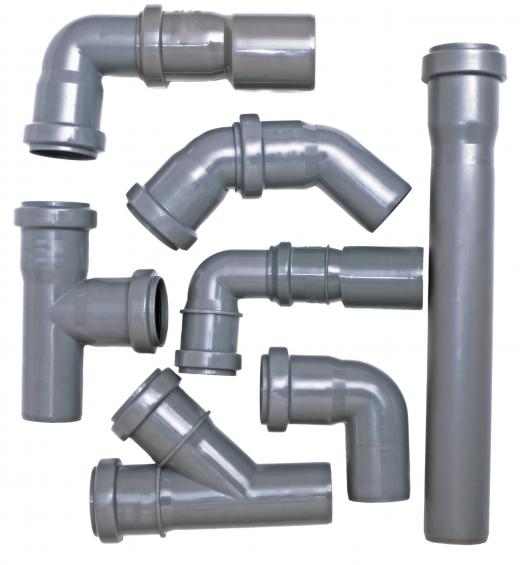The parts or sections that compose the typical pipe production line will vary somewhat, depending on the type of piping that is being manufactured. While there are subtle differences between the production process for metal pipes and plastic pipes, there are a few basic stages that will apply in just about any situation. Those basic phases or stages include the introduction of raw materials, combining additives with those materials in a mixing process, and some sort of extrusion phase. From there, the pipe production line will also include some means of shaping and cooling the product, cutting the sections of pipe and ultimately ending with a finished product. At various points in the production line, quality control measure are taken to ensure that the mixing and extrusion are producing pipe that meets the manufacturer’s standards.
Every pipe production line will begin with the introduction of raw materials into the process. From there, other materials are added to the mix, with each ingredient carefully measured to ensure the stability of the product. Some examples of other materials that may be used in different pipe production operations include antioxidants, stabilizing agents, and possibly additional metals or plastic compounds in addition to the primary material used for the pipes.

The process will continue with a careful mixing of all the ingredients used for the product. This is usually accomplished in some type of high-speed mixer that is capable of thoroughly blending all the ingredients into a single cohesive material. Typically, heat is used during the mixing to aid in the process.
One the ingredients are mixed properly, the pipe production line process will move on to cooling the material to a specific temperature range. From there, the extrusion phase will commence. This part of the process is configured to control the extrusion of the material, making it possible to ensure that only enough of the product to go into a machine barrel and form the piping is extruded at one time. The barrel rotates and uses centrifugal force to help begin forming the pipe, allowing the shape of the finished product to emerge.
After the extrusion, it is not unusual for the next phase of a pipe production line to include what is known as a shaping box. This is a phase in which the material is cooled further, allowing the shape of the pipe to become firm and solid. Sometimes known as a forming tank, this section of the line may also employ machinery to expose the pipe to alternating heat and cold in order to aid in the final shaping of the piping.
A final phase of the pipe production line includes cutting and stacking of the completed sections. Typically, the cutting is semi-automated, allowing workers to make adjustments to the cutting when and as necessary. Equipment is used to stack the cut sections onto flats or into containers as they emerge from the pipe production line. A portion of those finished sections are extracted for quality control testing, making sure the current batch meets with the standards set by the business.

